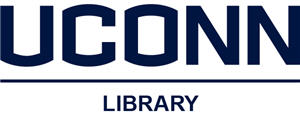Document Type
Article
Disciplines
Medicine and Health Sciences | Social and Behavioral Sciences
Abstract
Background: There is anecdotal evidence for the use of robots to facilitate prosocial behaviors such as joint attention and verbalization in children with Autism Spectrum Disorders (ASDs). However, there have been no normative data in typically developing children to evaluate the effects of robot-child interactions on social and communication skills. Objectives: The aim of our study was to evaluate the changes in social attention and verbalization skills of 15 typically developing (TD) children, using a structured 8-session imitation protocol within a robot-adult-child context. We further extended this imitation protocol to two children with ASDs. Methods: Pretest, session1, session 4, session 8 and posttest sessions were coded for attention patterns and the duration of verbalization of the children. Results: TD children directed maximum attention towards the robot during training; however, they were bored with the limited repertoire of the robot over time. The training context also facilitated spontaneous verbalization between the child and the trainer. The context of robot-child interactions also afforded social attention and spontaneous verbalization in both children with ASDs. Conclusions: Our findings suggest that robot-child interactions may be an enjoyable context for TD children, as well as children with ASDs. Our future studies will rigorously examine the use of engaging, robot-child interaction contexts for facilitating social communication skills in children with ASDs.
Recommended Citation
Srinivasan, Sudha and Bhat, Anjana, "The Effect of Robot-Child Interactions on Social Attention and Verbalization Patterns of Typically Developing Children and Children with Autism between 4 and 8 Years" (2013). Open Access Author Fund Awardees' Articles. 18.
https://digitalcommons.lib.uconn.edu/libr_oa/18



Comments
Originally published in :
Autism v.3:no.2 (2013)
http://www.omicsgroup.org/journals/2165-7890/2165-7890-3-111.pdf
Copyright: © 2013 Srinivasan S, et al.
This is an open-access article distributed under the terms of the Creative Commons Attribution License, which permits unrestricted use, distribution, and reproduction in any medium, provided the original author and source are credited